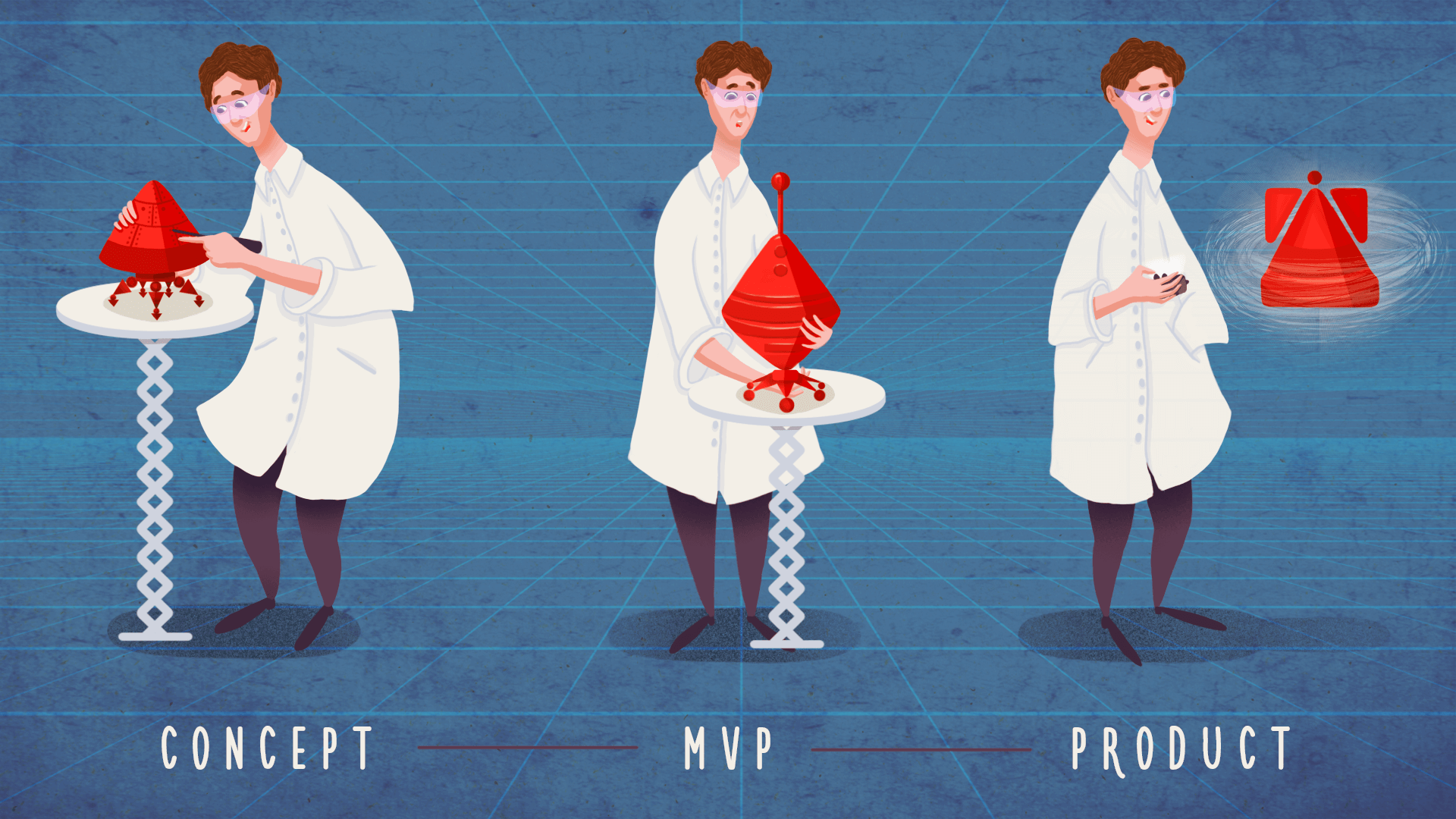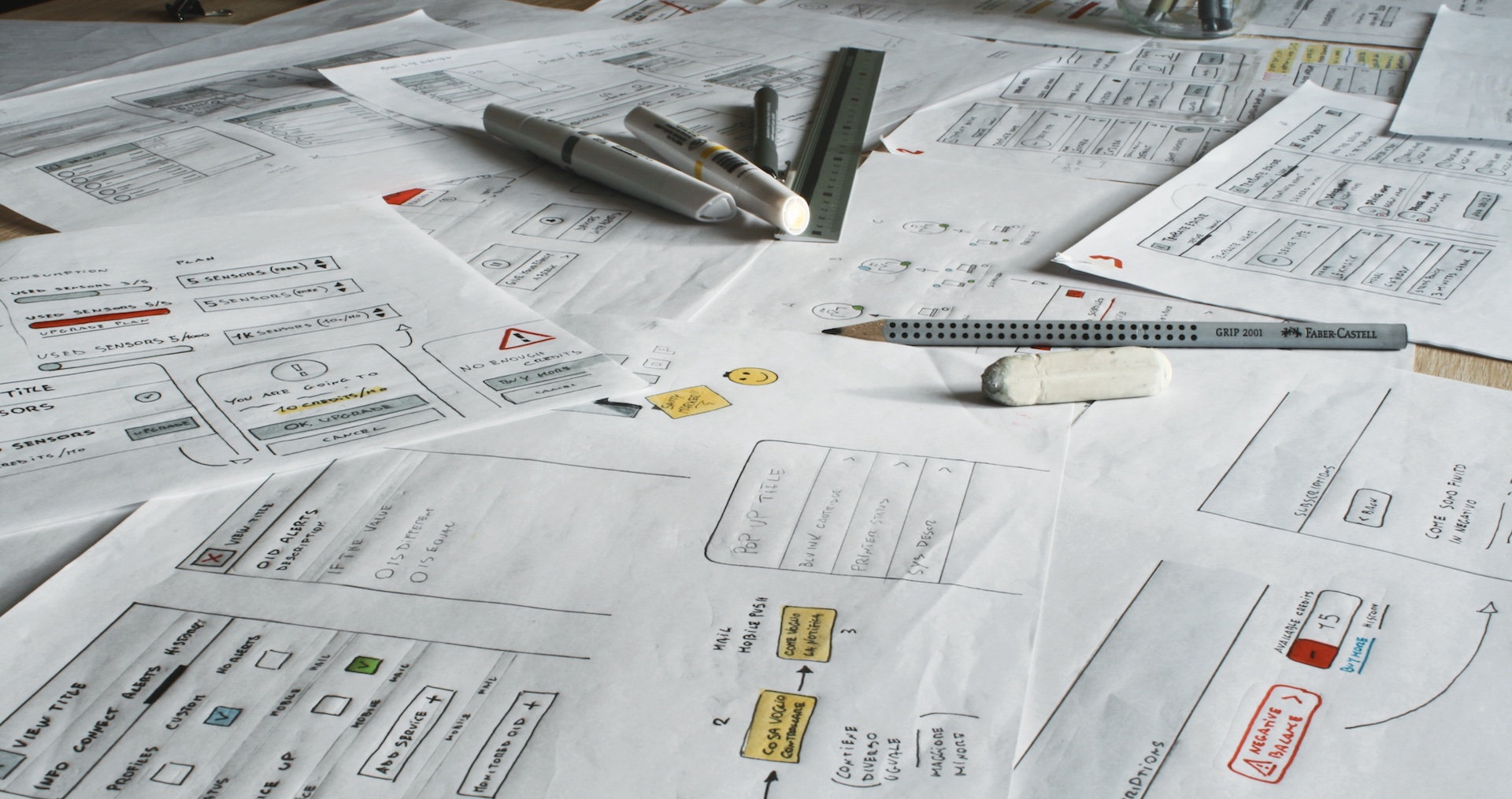Startups should not launch without learning what customers want and need. One of the most effective ways to do that is through interactions that are as close to the real thing as possible, with a minimum viable product (MVP).
Without an MVP, you can’t know how a customer/user is going to engage with your product/service and if they are likely to use it and ultimately, pay money for the solution you have created to solve a problem they have. An MVP gives you the ability to discover product/market fit.
Prototypes are useful too, but they are limited – they can introduce concepts to your target audience; but now you need interactions, a sense of how people will use the product and the features you need to build. These should be as close to real as possible. For technical founders and co-founders, building an MVP can seem relatively easy, compared to all the work that goes into building a fully functioning scalable product.
Can I build an MVP as a non-technical founder?
However, for a non-technical founder, building an MVP can seem like an almost insurmountable roadblock, since without one it could be difficult to encourage people with technical skills to join your startup, or raise any funding.
There are several examples of successful startups with valuations over $100 million, including Pandora, Swig, WANELO, NerdWallet, and Getaround, launched by non-technical founders. Other tech giants, such as Airbnb, Amazon and Alibaba were also founded by people who needed to recruiter tech skills as the company’s expanded.
Assuming you are going to do this yourself, there are a few things to consider before building a minimum viable product (MVP).
Pros:
- Cheaper: No need to hire freelance developers
- Full control: At this stage, you need to control your vision. You are creating something from scratch, which means it needs to reflect your vision, values and ideas for the product.
- Practical experience coding – which means, even if you hire someone for a technical role down the road, you have a more informed insight into the product and its features.
Cons:
- Time: Learning how to code, how to use technical products/services and – depending on experience – takes time and effort. It will be an investment of your time, and it could be an uphill struggle.
- Future engineers and developers may need to re-write everything, since the code base may not be up to the standard necessary for a fully functioning scalable product with multiple features.
How to build an MVP: Tools you can use
How you build an MVP depends on the service you are creating.
Do you need a clickable prototype – a product simulation – that takes users through various features of a product – even in a basic format? Or do you need something simpler: Known as a “concierge MVP” – often a landing page, with basic product functionality implemented manually, behind the scenes?
Either way, we have a put together a list of a few tools you can use as a non-technical founder to make it easier to build an MVP.
- Concierge MVP: Landing pages, with basic functionality – such as an easy way for web visitors to request the services you are providing – are essential. Thankfully, there are numerous tools that make creating one quick and easy, such as WordPress, Unbounce, Launchrock and Squarespace. Behind the scenes – especially if you are working with others – collaborative and communication tools, such as Gmail and Google Apps, MailChimp, Trello, Slack and Buffer are also useful.
- Clickable Prototype: It helps to have a landing page so that you can engage with potential customers, so the list above is worth reviewing. If you are also building a rough – it doesn’t have to be perfect, and it shouldn’t take you a long time – version of your product, then how you do this depends on your level of technical knowledge and experience. There are several tools that will make this considerably easier, including InVision, Webflow, Proto.io and Justinmind.
All of these tools are either free or relatively cheap. You don’t need to invest much, apart from time, to create a rough prototype and MVP.
Get Feedback: From Customers/Users
Without feedback, it is pointless building an MVP. An MVP that doesn’t engage with potential customers/users is a hobby project, not a potential startup. You need – can not stress this enough – to know what people think, what they want, whether they would pay for the product/service you are creating.
There are numerous tactics for you to engage with your potential audience:
- Get a landing page live so that people know your product/service exists. Put your message across clearly. Aim to use every word to sell the value of your product: Sell how what you’ve created will help your potential customers. Next, you need to ensure people are aware of this landing page – the right people: Your target audience.
- Ask for feedback. Ask using social media, email – you could send feedback request to a whole group of potential users via MailChimp with a SurveyMonkey survey or Google Form. These are easy to create and share: Document every piece of feedback you get and use this to decide what to priorities as you iterate the product development.
- Use content marketing (publish articles via LinkedIn and/or Medium – to reach a larger audience using these platforms search and curation functions), social media content, video, Facebook Live, Instagram Stories – any means necessary to catch someone’s attention to get the feedback/validation you need.
- For example, if you need to engage with accountants and lawyers (and anyone in sectors where they are going digital, but not ‘digital natives’), get your landing page and content on LinkedIn and attend as many in-person networking events in your area as possible.
- Meeting people in person – with a business card so they can review your landing page straight away – is more effective than sticking purely to digital marketing, since although you will reach a – relatively speaking – you can get immediate feedback, and this will help you get an active referral-based word of mouth network.
- However, if your audience is developers, then Hacker News, GitHub, AngelList, Product Hunt and reddit are invaluable channels. Although there are numerous networking events in most major towns and cities for developers too, your produce will spread much faster through people sharing the link to articles and landing pages on these social networks.
Building an MVP as a non-technical founder is not easy, but there are enough free and cheap tools to make this easier. Once you have a working – whether you need a concierge MVP or clickable prototype – version, the challenge is getting feedback and validation for your idea. Without this, your efforts are wasted.
Spending time making your MVP or landing page or social media look attractive is, at this stage, far less useful than getting real-world feedback from potential users and customers. Make sure you get as much feedback as possible since this is the only way to find out if what you want to create is viable, useful and potentially something your target audience is happy to pay for.
Transform your startup dream into a reality. From idea to prototype in 48 hours, and a market-ready app in only 2 weeks. Get a quote in 30 minutes, from KFG International.
Together We Can Build an Incredible Product.
Let Us Share Our IT Expertise and Bring Your Design to Life.
Get An Estimate in Minutes
Ask our manager about special 10% 💸 discount on the continuous improvements package.



